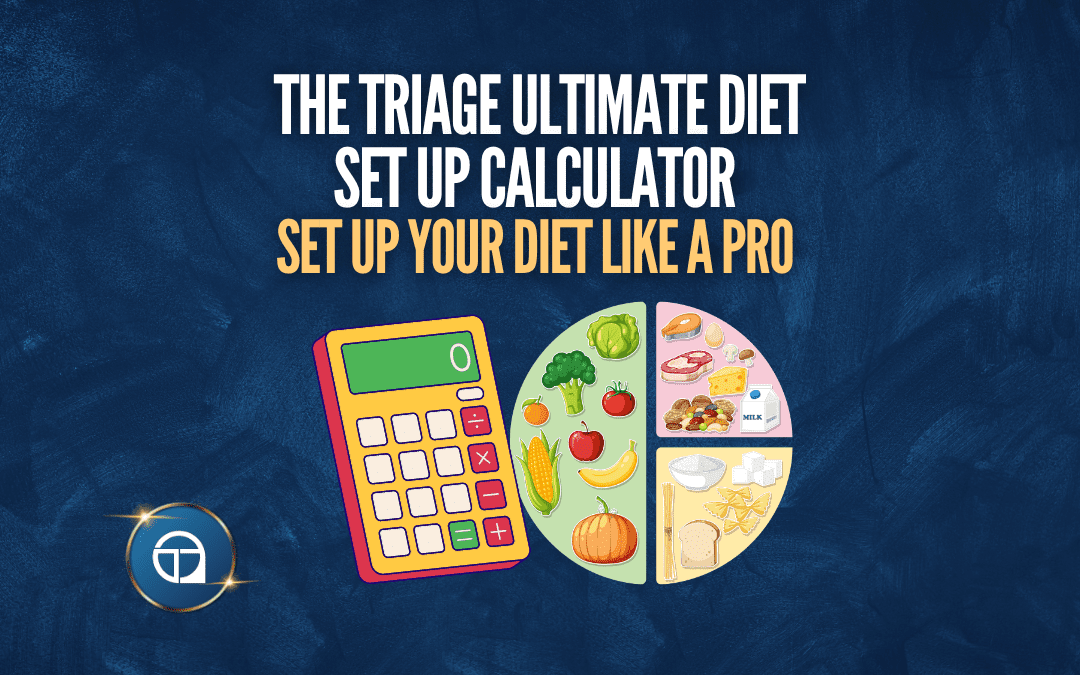I created the Triage Ultimate Diet Set Up Calculator to help solve a very specific problem. There are many online calorie and macronutrient calculators that will help you set up your calorie and macronutrient targets. These nutrition set up calculators are helpful, however, many of them just aren’t all that accurate or they have serious flaws. For sure, they give you some numbers and that can be a nice starting point, but very often, the numbers aren’t really backed up by the best evidence-based practices. They also aren’t helpful for coaches who want a tool to help them quickly get a snapshot of what a good diet set up for someone would look like.
This calculator is based on the best available evidence for setting up an effective health-promoting diet, and you can read more about the rationale behind all of the specific targets in our comprehensive article on setting up a healthy diet. We also have a variety of other nutrition calculators that each have their own specific use cases, however, this is this calculator is based on the methods we use to get phenomenal results with our clients, and what we teach in our nutrition coaching certification course.
This diet set up calculator is fairly intuitive to use, and it will help you to dial in your diet set up. It allows you a lot more freedom to play around with the diet, but like with most things, with more power, comes more responsibility. So if you don’t know what you are doing, then it is very easy to go wrong with a calculator like this and you may be better off using a more templated calculator such as our calorie and macronutrient calculator.
This calculator is ideal for coaches who want to be able to very quickly get an idea of what someone’s diet should look like, while staying within good nutrition set up parameters. Of course, when coaching someone, you are always going to have to tailor the diet specifically to the individual, but it is incredibly helpful to at least have a rough baseline for the diet set up. I know many coaches work this stuff out on excel or manually, and this online diet set up calculator is a tool that coaches can use to more easily set up the diet for their clients.
So, without further ado, here is the Triage Ultimate Diet Set-Up Calculator!
The Triage Ultimate Diet Set-Up Calculator
Optimal Diet Set Up Calculator
Calories: 0
Protein: 0 grams
Carbohydrates: 0 grams
Fiber: 0 grams
Fat: 0 grams
Saturated Fat: ≤ 0 grams
Water Intake: 0 litres

